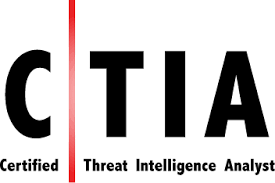EC Council Certified Threat Intelligence Analyst C|TIA / CTIA
EC Council Certified Threat Intelligence Analyst C|TIA / CTIA

Virtual Instructor Led Online Schedule
Virtual Instructor-Led Online Training
Interested in group training?
Course Schedule
This green checkmark in the Upcoming Schedule below indicates that this session is Guaranteed to Run.
| Start Date - End Date | Time |
|---|


